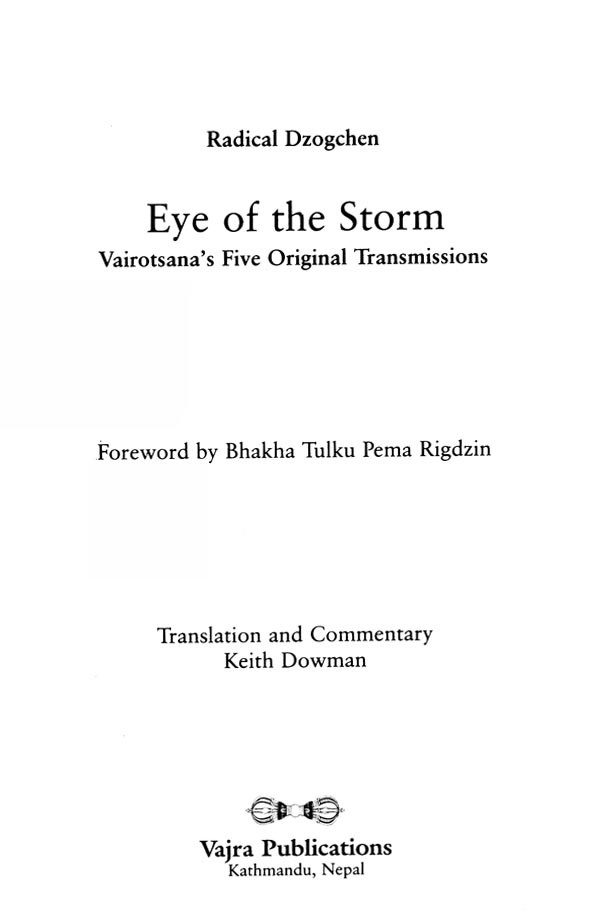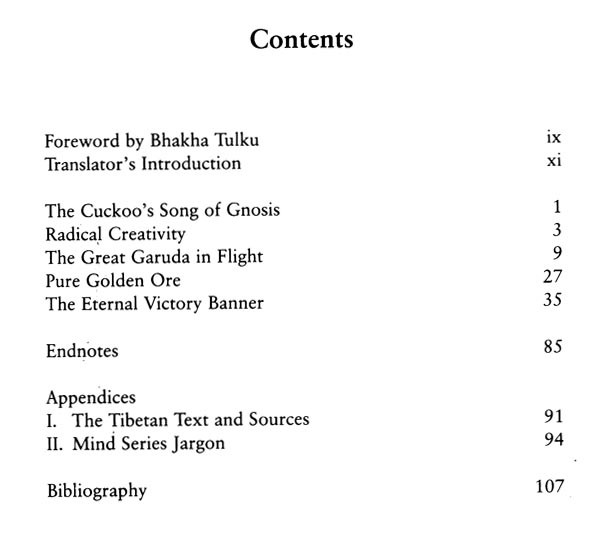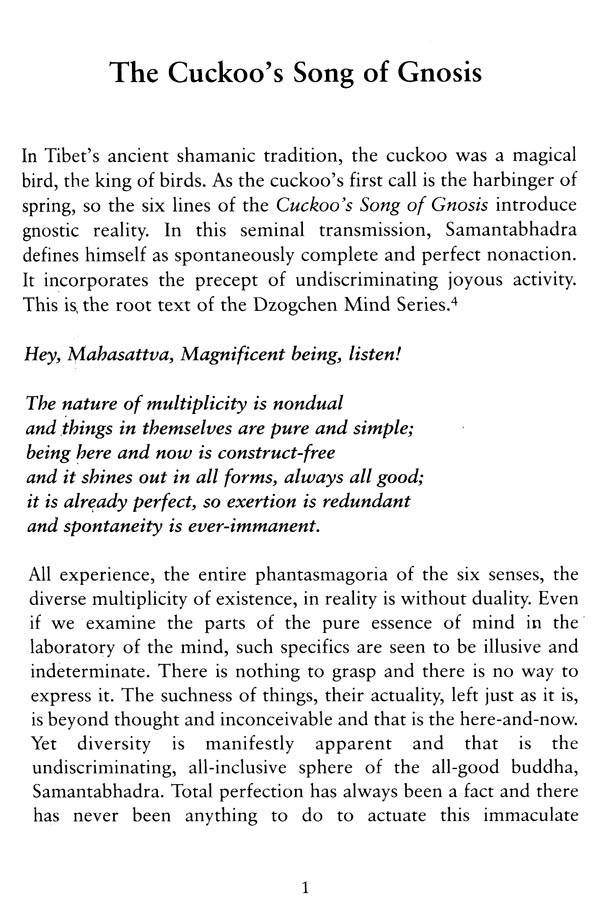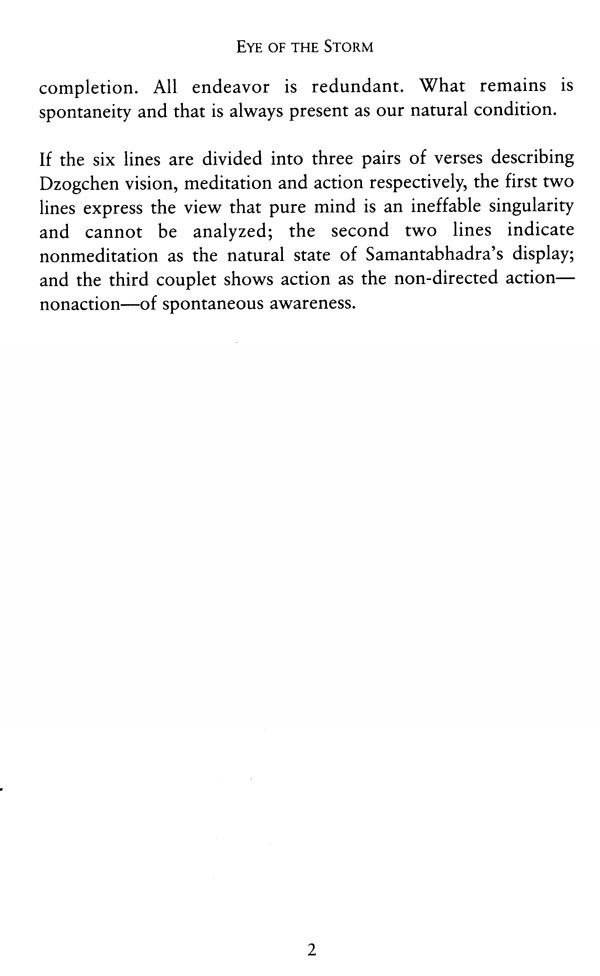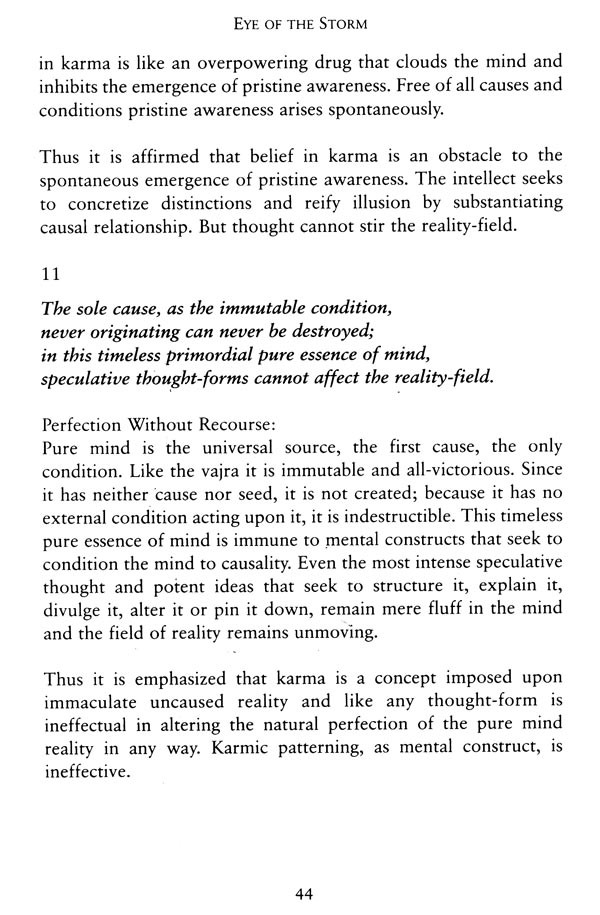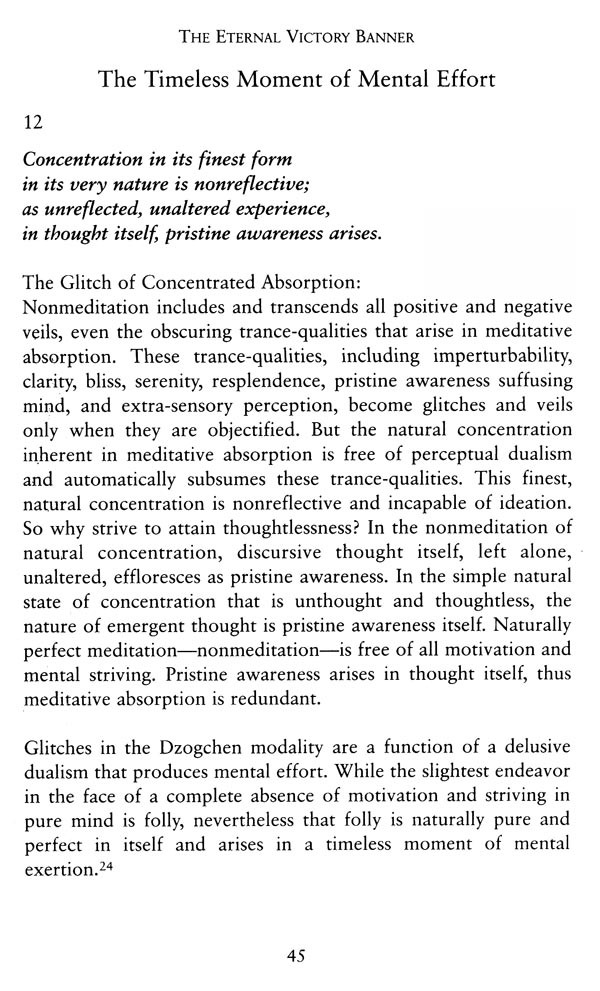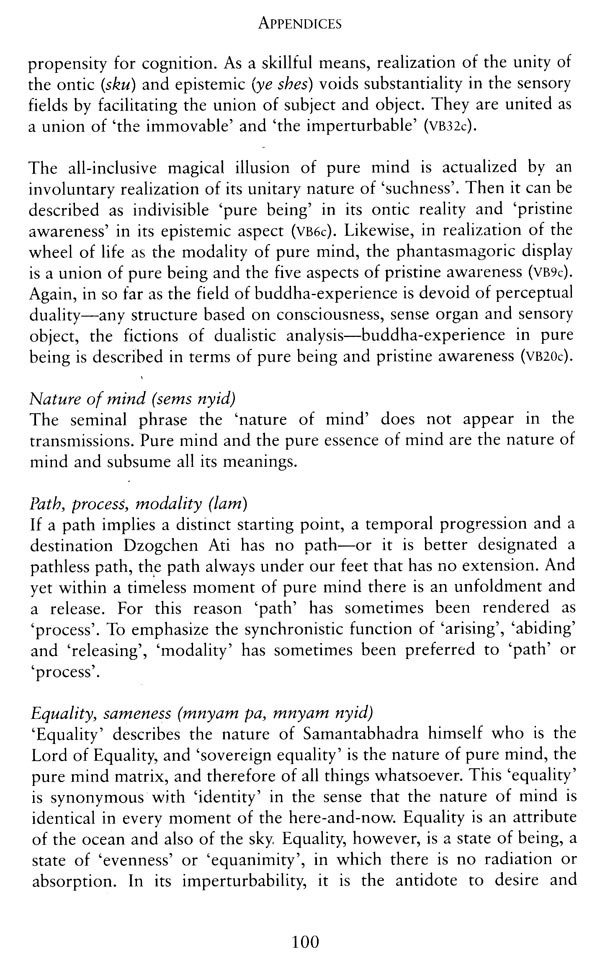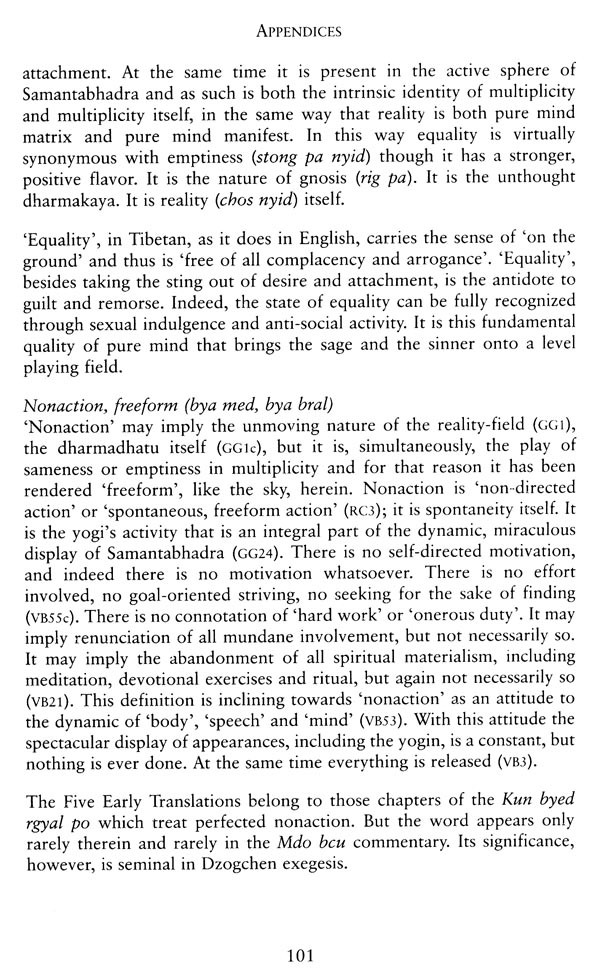About the Book The five texts translated from Tibetan into English in this book are considered the first transmission of Dungchen Ati to Tibet. They constitute the root and essence of Dzogchen in Tibet - basic, raw Dzogchen precepts, appropriately styled radical Dzogchen This is the special, extraordinary teaching of our Nyingma lineage. The great masters have all attained realization through Dzogchen, contemporary masters all owe their status to Dzogchen, and any attainment in the future will be based on the precepts of Dzogchen Ati. Bhakha Tulku Pema Rigdzin Precise and poetic, authentic and elusive, these sweet translations bring the warm breath of the tradition into our daily lives. This book is a major contribution to the exciting spread of Dzogchen in modern times, providing reliable versions of key texts in language which creatively challenges our assumptions. This new work by Keith Dowman is thoughtful, ripe and poignant, rich in the fruit of years of learning working experiencing and letting go James Low, author of Simply Being.
About the Author Keith Dowman, pilgrim and traveller, translator and teacher of Dzogchen, author of Sky Dancer and Masters of Mahamudra, lives in Kathmandu.
Foreword The five texts translated into English in this book are considered the first transmission of Dzogchen Ati to Tibet. They were transmitted by a Tibetan monk called Vairotsana who distinguished himself not only in the field of translation, emerging as the greatest of the Tibetan lotsawas, but also as a traveler and pilgrim who left the Land of the Snows for the hills of the Hindu Kush to bring back a canon of Dzogchen texts from its closely guarded source. Returning from Oddiyana, where he had received the transmission of Dzogchen Ati from Shri Singha, he immediately translated these five tantras into Tibetan, and they became known as the Five Early Translations (Nga-gyur-nga). They constitute the root and essence of Dzogchen in Tibet-basic, raw Dzogchen precepts that are appropriately designated 'radical Dzogchen'.
Tulkus in the Nyingma tradition, considered emanations of the heart of reality, have been trained in the rites and devotions of the lineage, in the meditations and yogas of the vajrayana, in the Buddhist philosophy of India and Tibet and in the skillful means of assisting others not only on the path of liberation but in the amelioration of their suffering in samsara. But what precedes all of that in significance and priority, what gives it meaning and what facilitates the sharing of the buddha-dharma is Dzogchen Ati. This is the special, extraordinary teaching of our Nyingma lineage. The great masters, including Vairotsana, Padma Sambhava, and Vimalamitra, have all attained realization through Dzogchen, contemporary masters all owe their status to Dzogchen, and any attainment in the future will be based on the precepts of Dzogchen Ati.
Introduction The nature of Dzogchen, or the Great Perfection, is perhaps best understood as the essence of all nondual mystical aspiration. Within the Tibetan context it lies at the heart of shamanism, Bon and Buddhism. Taking its cultural and linguistic references from Bon and Buddhism it may appear to be limited to those traditions; but to see its existential reality restricted to that cultural frame would contradict the Tibetan precepts that define it as utterly nonspecific and unconfined. Historically Buddhism provided the ground in which the precepts of the Great Perfection appeared, and certainly it still provides a rich and wonderful metaphysical field of reference. But the principles of radical Dzogchen are appropriate to every religious and cultural context. All religion and culture is transcended by its formless essence. It subsumes science and humanism today as it once incorporated shamanism and theism. It supersedes religion by shunning dogma and doctrine. It surpasses yoga and meditation by disavowing technique. It transcends the creativity of the human mind whether as science or art-through identity with our intrinsic nature. Inclusivity defines the Great Perfection.
As mystical endeavor the quest for natural perfection may be conceived as long as human history. Surely it is hidden in the mysteries of Babylon and Egypt, Greece and Rome, in Indian Tantra, the Chinese Tao, Muslim Sufism, and in the Jewish Torah and the Christian heresies of the Albigensians, the Knights Templar and the Alchemists, if only because natural perfection is inherent in human being and cannot be suppressed.
**Contents and Sample Pages**
